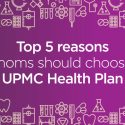Know your network: In vs. out
By now, you’ve probably heard the terms “in-network” and “out-of-network” in the context of health insurance. But what do they mean? And why should you care?
Well, as it pertains to health care, your choice of network determines who you can see and where you can go for an affordable price. So at the very least, you’ll want to know the basics. Let’s start with in-network access.
“In-network” refers to any doctor, hospital or other health care provider that has agreed to be a part of your health insurer’s network of approved providers. This means that when the provider performs a treatment or service, they will generally be paid at a set rate. This contracted rate, or “allowed amount,” is the agreed-upon cost you and your insurer collectively pay the provider for the services you receive.
What differs from plan to plan is what share of the cost you pay versus what your insurer covers for you. This, along with size, convenience, and quality of your network, is important to consider when you’re choosing a plan.
But how can you determine the size, convenience, and quality of a network? Luckily, most insurers make it easy to find out which doctors and health care providers are included in-network for any given plan. This information is usually available as a list on the insurer’s website or through the insurer’s call center. Some even provide network maps to illustrate the range of coverage included.
When it comes to convenience, consider what’s most important to you. For example, maybe you have a primary care physician (PCP) or family doctor you see often, or a health care facility you really like close to home. In that case, you’ll want to make sure that those providers and facilities are in your network, so that you can continue going to your favorite health care professional or hospital.
From a quality perspective, simply consider what you know about the doctors and hospitals included in your network. Have you heard good things? Are they ranked among the top in the country? Even if you don’t have any experience being treated in facilities, it’s good to do a little research. You want to feel confident that you’re going to have access to the very best care for you and your family.
Now say you’re happy with your network, but for some reason you want to go to a facility that doesn’t participate in your insurer’s plan. In that case, the facility would be out-of-network. Keep in mind that if you use an out-of-network facility, you’ll likely have to pay more for the care you receive. Some plans don’t cover out-of-network care at all except in an emergency or under other special circumstances. Some insurers do still cover a percentage of the cost for out-of-network care, but this varies from plan to plan, so it’s worth looking into before you make a decision.
Okay, let’s take a step back. All this network business is a lot to take in at once. But the truth is, it’s a good thing that there are so many options. It means there’s a plan out there that suits your needs really well — whether it’s a smaller network with low premiums, a larger network with low out-of-pocket cost, or something in between. You simply have to find it.
And remember! If you’re not happy with your current network, you can always get a new plan with a network that better fits your needs. This year, open enrollment is from Nov. 15, 2014 to Feb. 15, 2015. During that time, you can shop for health coverage on the Marketplace. So take some time to get to know your network, and then do what’s right for you.




